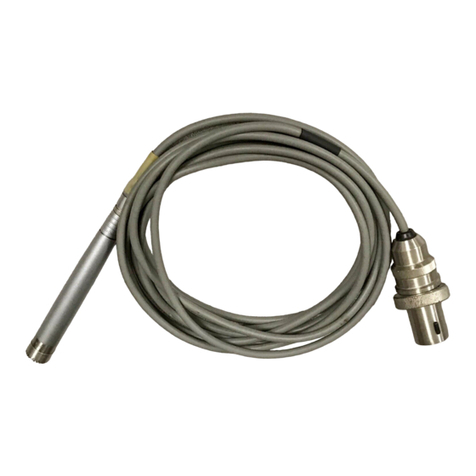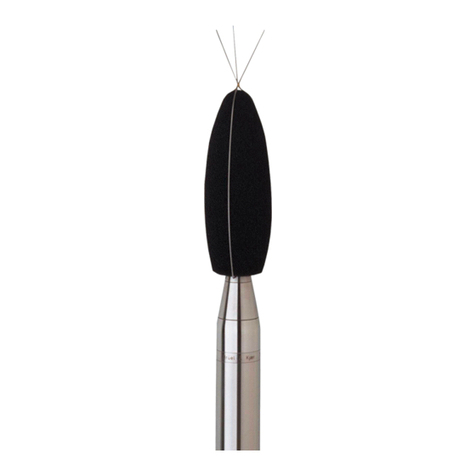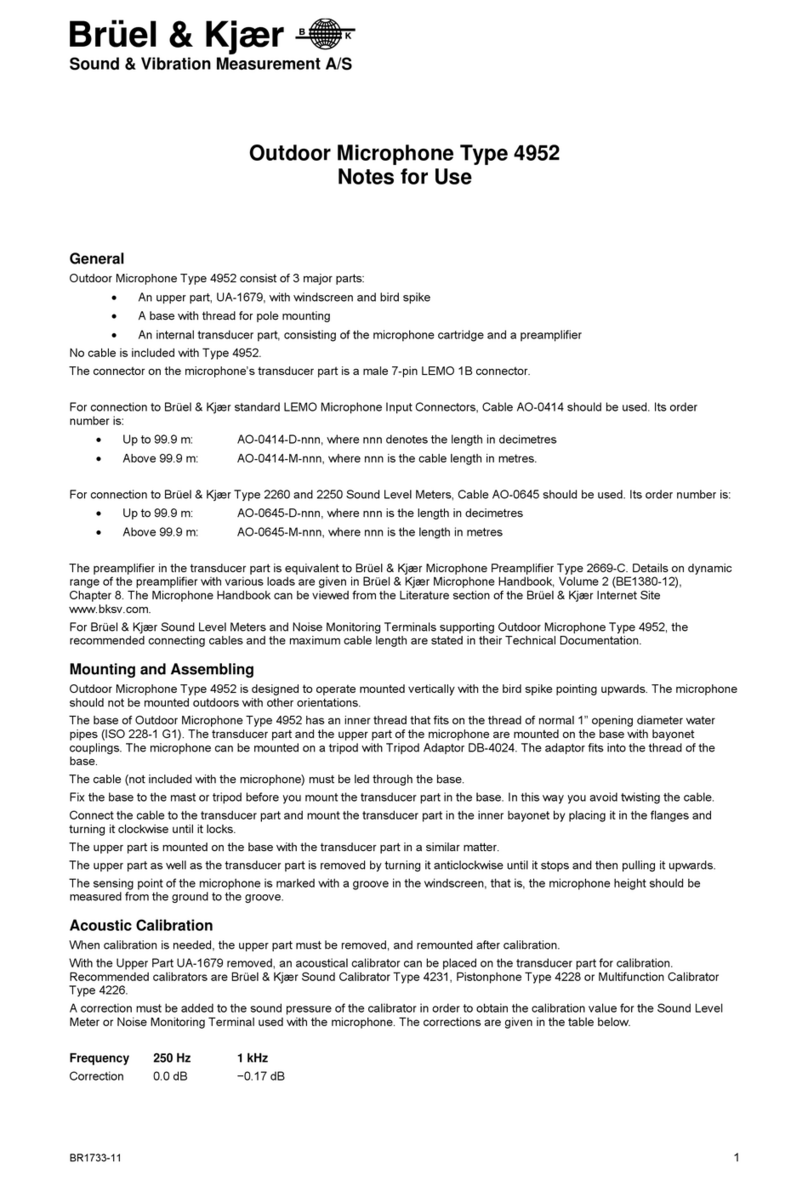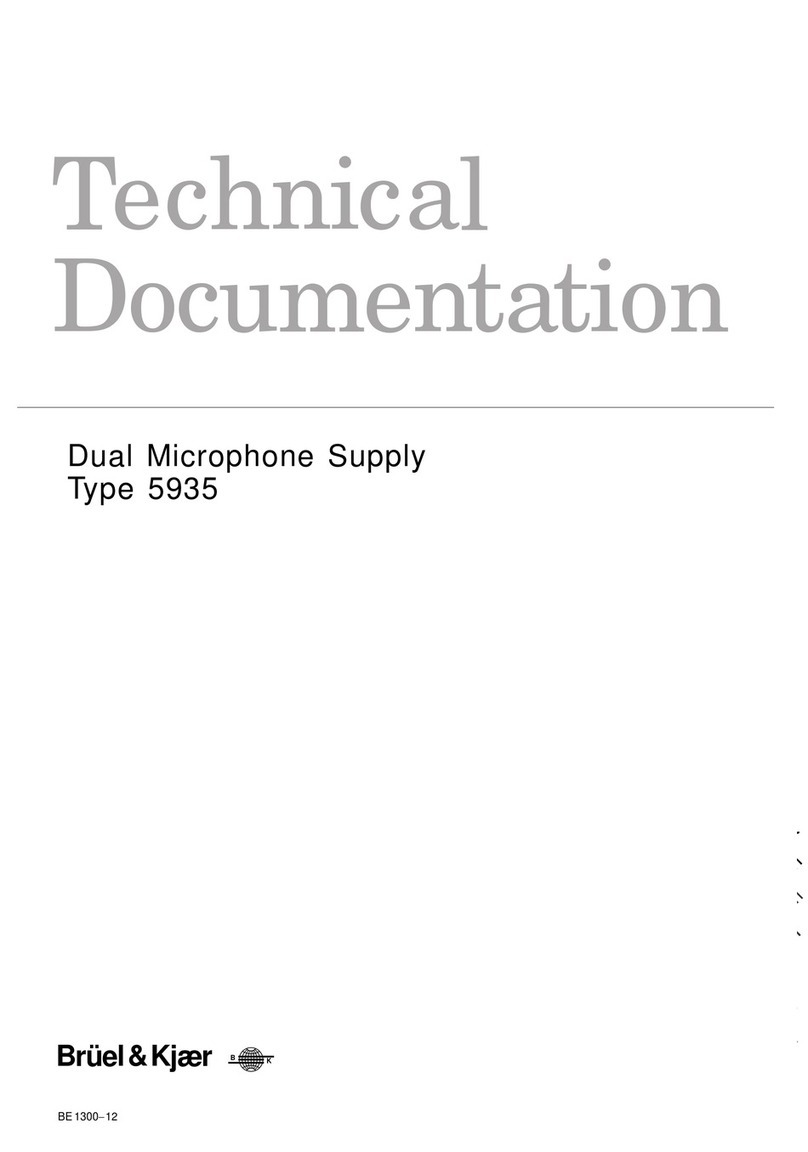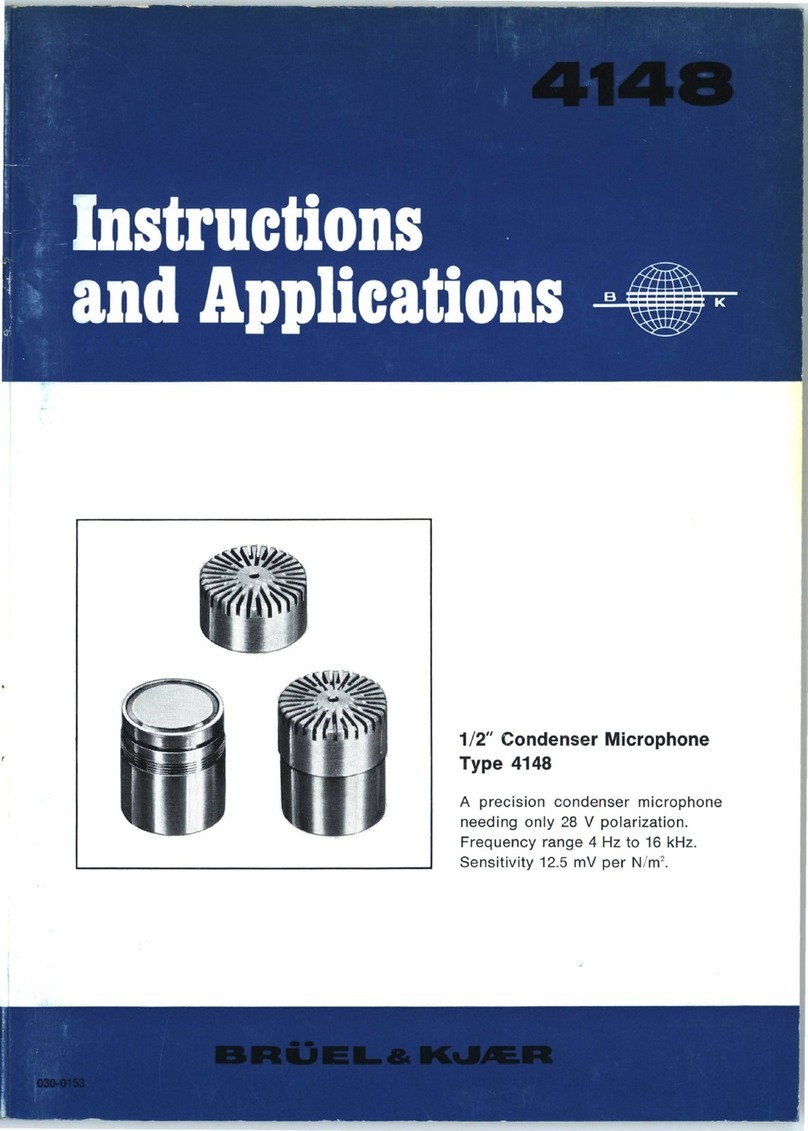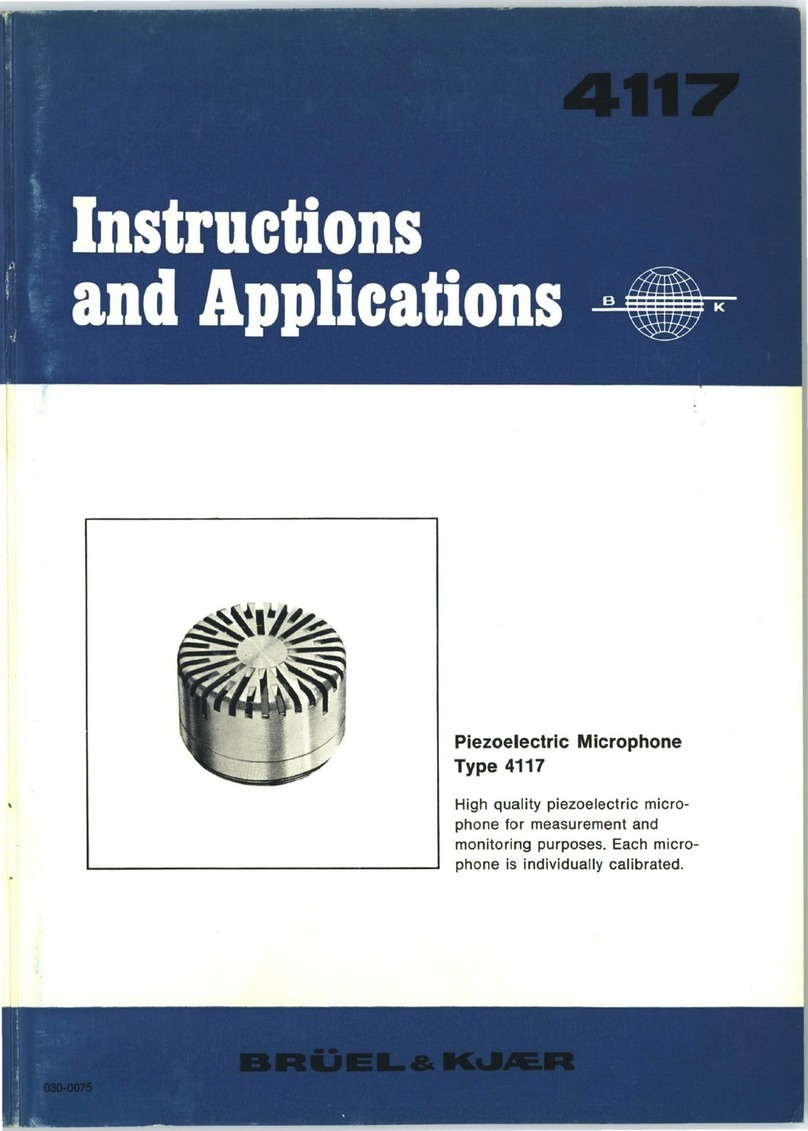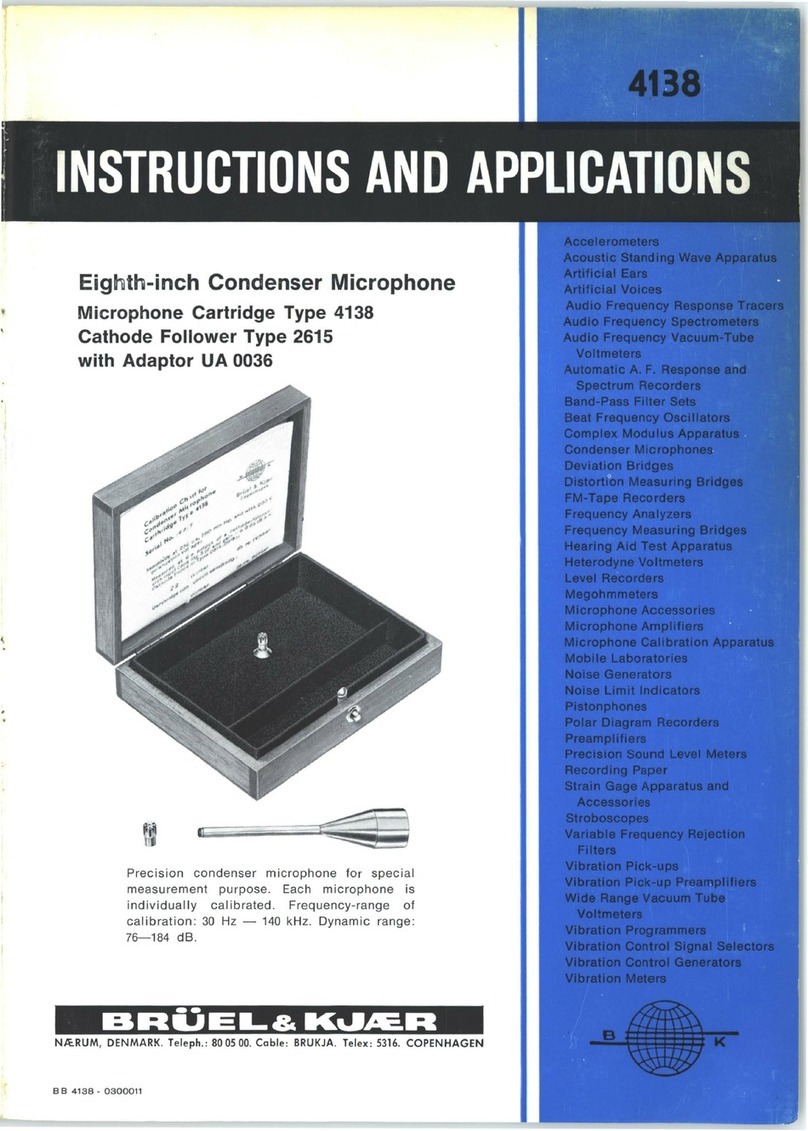
4111
INSTRUCTIONS
AND
APPLICATIONS
Condenser
Microphone
Type
4111
Specially
designed
for
measurement
and
calibration
applications,
this
Condenser
Microphone
features
very
high
stabilit
y, a
high
linea
r
frequency
response
together
with
small
dimension
s.
BHUEL
&
KJJEK
Naerum,
Denmark
.
Phone
Naerum
500.
Telegrams:
BRUKJA,
Copenhagen
Beat frequency oscillators
Low frequency oscillators
Deviation
test
bridges
Strain gauge apparatus
Frequency measuring bridges
Distortion measuring bridges
Heterodyne voltmeters
Audio
f~uency
spectrometers
Frequency analyzers
Level
recorders. a. c. and d. c.
Automatic frequency response
recorders
Automatic
A.
F.
spectographs
Logarithmic potentiometers
Noise level potentiometers
Recording paper
Polar diagram recorders
Vacuum tube voltmeters
Wide range vacuum tube
voltmeters
Diode voltmeters
D.
C.
voltmeters
Megohmmeters
~icrophone
amplifiers
Impact sound generators
Acoustic standing
wa.,.
apparatus
Artificial ears
Condenser microphones
Microphone calibration
apparatus
Vibration pick-ups
Integration networks
Rotary selectors
Universal selectors
Freqllency response tracers
Conductivity meters
Electronic counters
Counting
rate
meters
Impulse generators
Portable dose
rate
meters
Portable counting
rate
meters
G.
M.
tubes·& accessories
